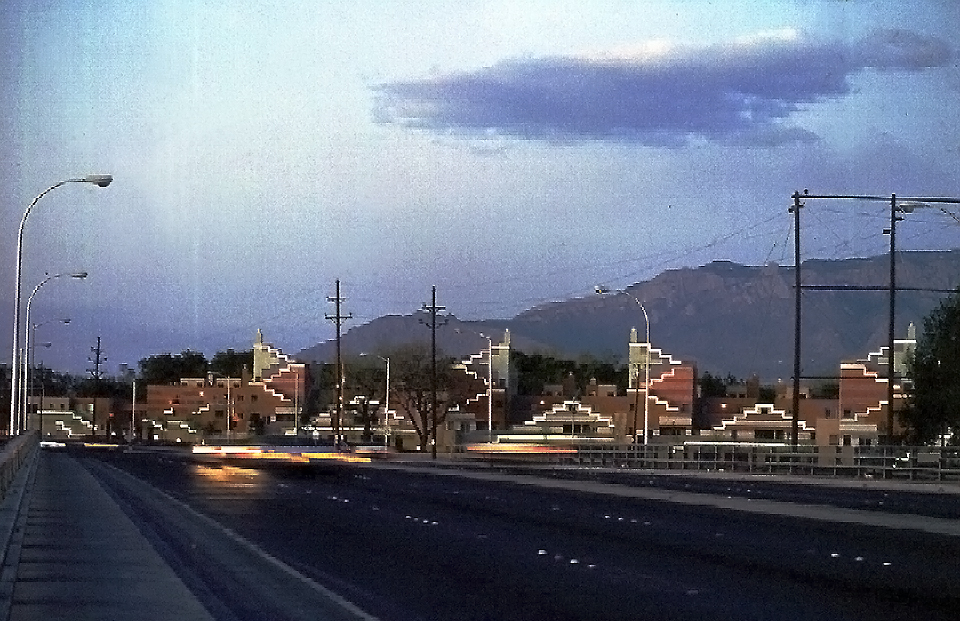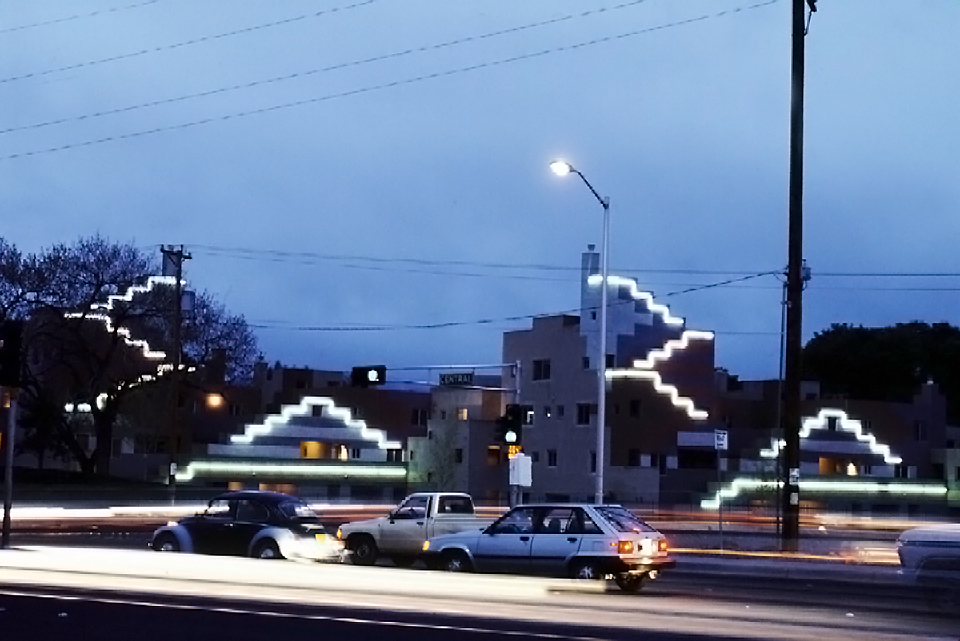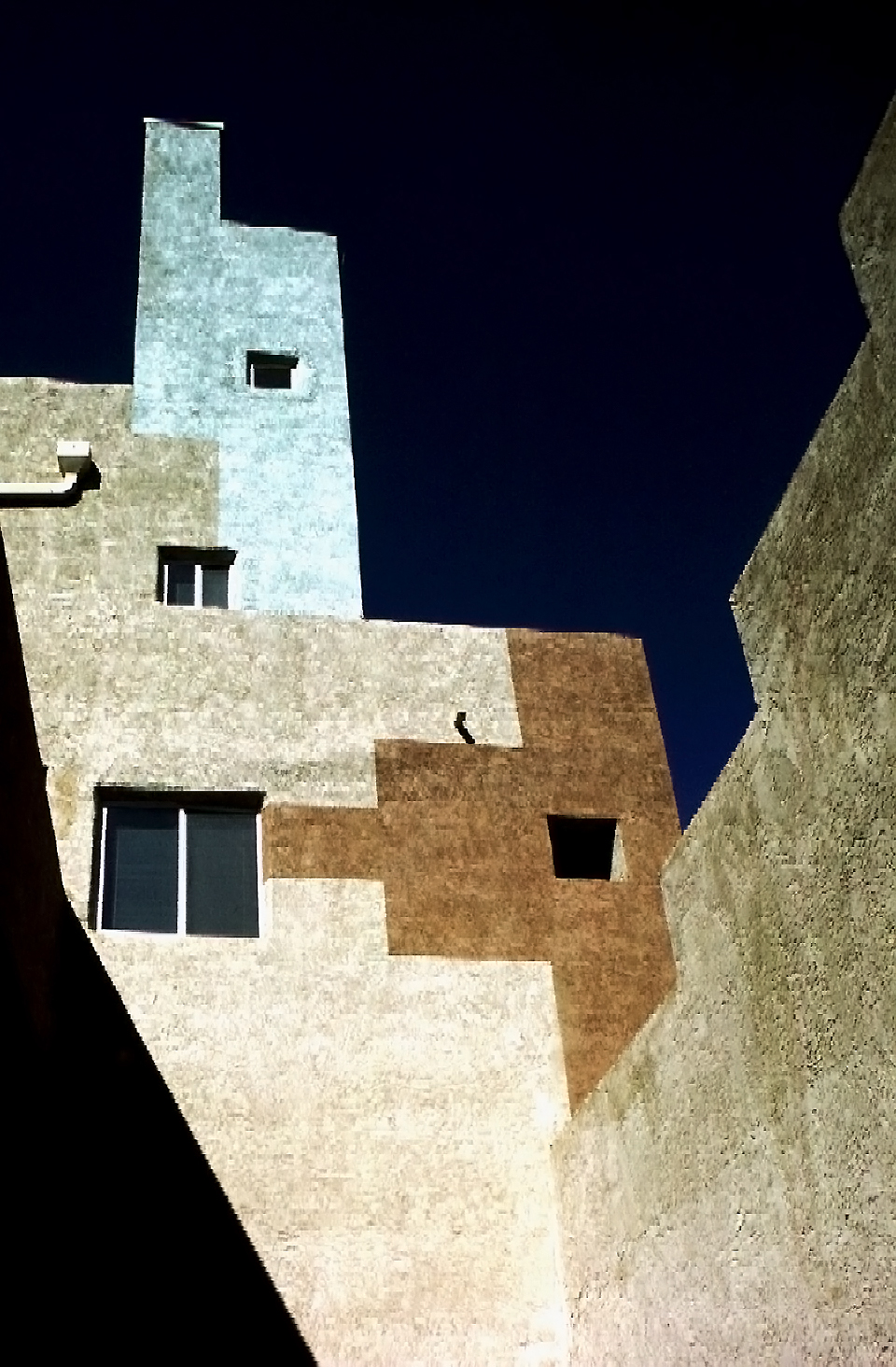THE BEACH APARTMENTS Albuquerque, New Mexico Completed 1986 The Beach apartments straddle a cultural fault line between the terrain of the Hispanic cruisers and the fairways of the Albuquerque Country Club golfers. Augmenting the imagery implicit in this juxtaposition is the location of the complex on Central Avenue, also known as Highway 66. Where this historic route traverses West Albuquerque, poignant motels and cafes survive, remnants of a passage in American life. The contrasts and conflicts at the site underlie the development of the major building facades. The 66-frontage elevation of The Beach addresses a cacophony of images which one must edit selectively. These images range from Grapes-of-Wrath voyagers to a wheeled version in San Gabriel Park of the Spanish evening 'paseo'. The Country Club elevation is a subdued quasi-Mediterranean averaging-out of that neighborhood's stylistic drift. The resultant hybrid represents an abstraction of Highway 66 iconography, a 74-unit 'low-rider' parked on the nation's historic mainstream. The complex is arrayed as architecture-cum-landscape against a dramatic mountain backdrop. Four pinnacles of penthouse sky-plazas rise above the intermediate parking court valleys. Views from within the apartment units, terraces and courts are across the golf course and toward the mountains with secondary views toward the volcanoes and sunsets on the West Mesa. Beyond responding to the context in imagery and form, the Beach addresses its neighborhood in providing low-to-moderate rents for a percentage of its tenants. At least twenty percent of the units are rent-controlled. Tax-free municipal bonds were issued to finance this project. The accreted atmospheres of the site produce an image that avoids easy nostalgic references. Advancing and receding, patterned portal frontispieces reduce the 750-foot-long behemoth to the familiar scale of Highway 66 motel parking courts. The graphic facade patterning implies Navajo blanket terraced grids. The articulated neon lighting and the stepping balustrades and parapets provide kinetic and three-dimensional analogs to these two-dimensional, colored patterns.
|
| PROJECTS | TEACHING | CONTACT |




